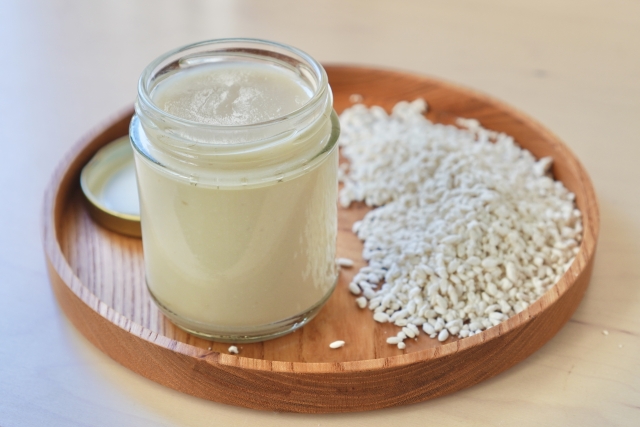Shio koji (塩麹) is a beloved seasoning in Japan, known for its mild saltiness, natural sweetness, and deep umami. While it’s sometimes casually referred to as a “fermented seasoning,” the transformation of shio koji is actually powered by enzymes rather than fermentation in the microbial sense.
In this article, I’ll walk you through how I make shio koji at home—based on my experience making it many times. I’ve included daily photos of the process to show you exactly what to expect. It’s simple, satisfying, and brings a beautiful depth of flavor to your cooking.
What Is Shio Koji?
Shio koji is made from three basic ingredients:
- Koji (fermented rice)
- Salt
- Water
That’s it! But thanks to the powerful enzymes in koji, this simple mixture transforms into a magical marinade and flavor booster. It tenderizes meat, enhances vegetables, and brings out deep savory notes in soups and sauces.
What You’ll Need
You don’t need any special tools—just clean hands and a little patience. Here’s what to gather:
- A clean glass jar with a lid (preferably wide-mouthed)
- Dried rice koji (available at Japanese markets or online)
- Salt (preferably non-refined, but it’s OK to use any kind of salt)
- Clean water (preferably filtered or boiled and cooled)
- A spoon for mixing
- Alcohol spray for sterilization (you can boil or use some other measure if you prefer)
- A kitchen scale (for accurate measurement)
Basic Ratio
Here’s a simple ratio to remember:
- Koji: 100g
- Salt: 35g
- Water: About 100–120ml (enough to just cover the mixture)
You can scale the recipe up or down depending on your jar size.
You might be worried about using too much salt, let’s say for your blood pressure, but sufficient salt in Shio koji is essential to prevent other germs and microbes. Salinity should not be less than 13%.
Step-by-Step Instructions
1. Sterilize Everything
Before you begin, sterilize your jar, lid, spoon, and hands. This helps prevent unwanted bacteria.
My personal recommendation is Pasteuriser77.
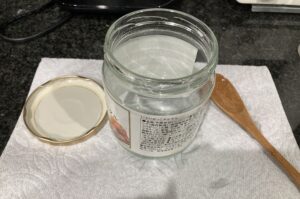
2. Mix Koji and Salt
In a clean bowl, mix the dried rice koji and salt thoroughly. Break apart any clumps of koji with your fingers.
↑this is what you would often see in how-to instructions of shio koji.
I have done experiments myself, and I don’t think you would need to mix koji and salt first.
If you are using dried koji, my personal recommendation would be to mix half of the water and koji first, and wait for 5~10 minutes with lid on top. Dried koji will soak up the water very quickly, and when you mix everything together, I often saw my mixture firm and lacking water. As I mentioned before, salinity is the key, and you would not want to add extra water in days to come.
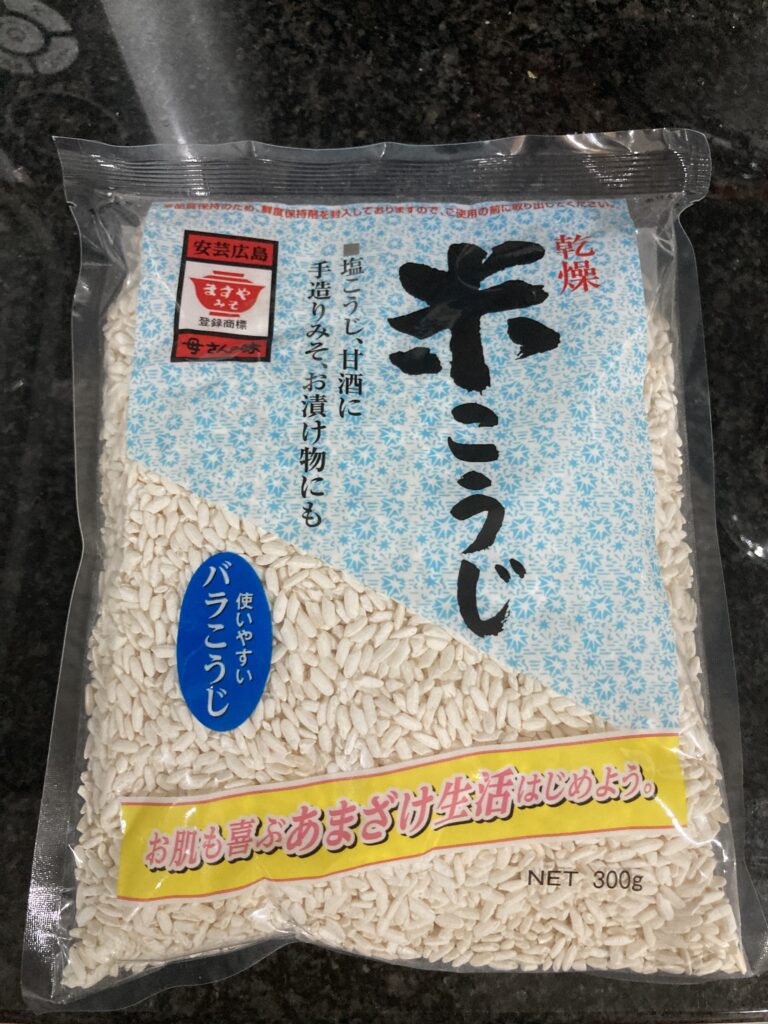

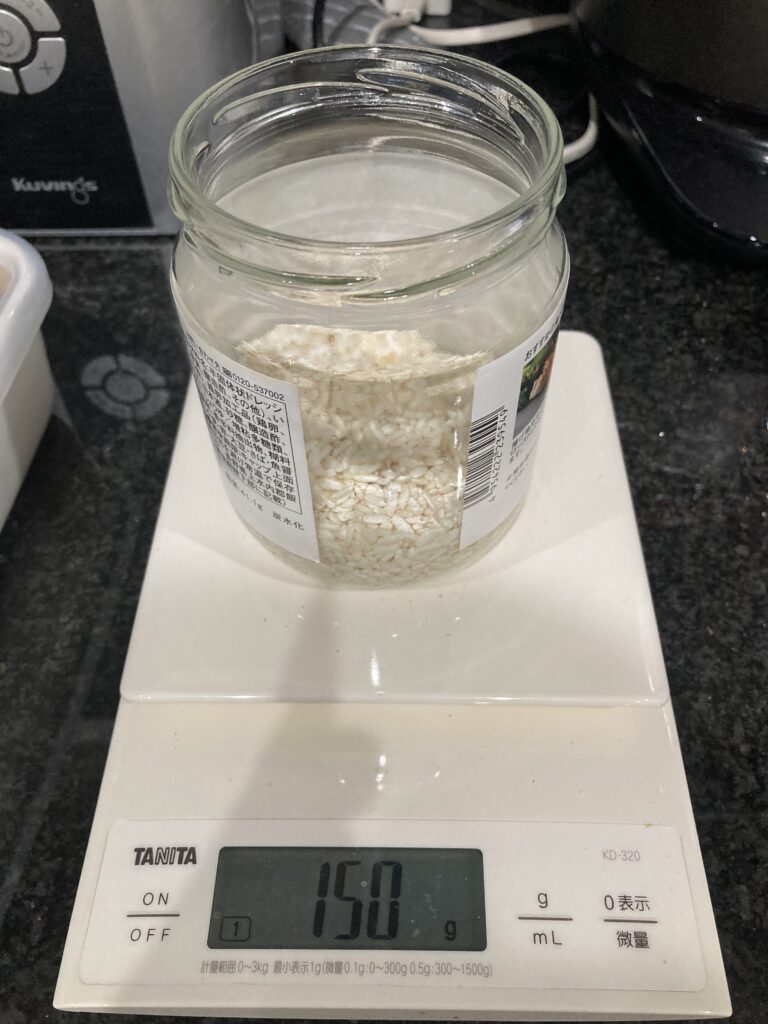
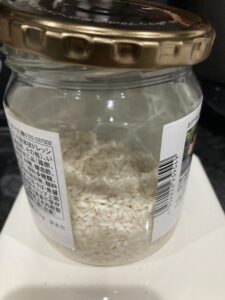
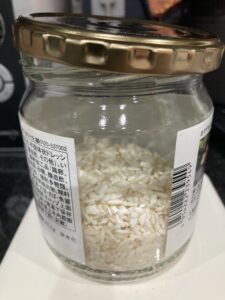
You wouldn’t need an extra bowl, either. Just mix it in the jar you are going to preserve in! Less washing, good for the environment.
Ok, now you can add salt. Stir.
3. Add Water
Add rest of water into your jar. Koji and salt should be evenly distributed. Make sure your jar has some space for stirring.
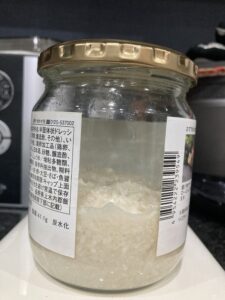
4. Label and Leave It
Put the lid on loosely. Write the date on a label (if you want to) and place the jar somewhere cool and out of direct sunlight, but not in a fridge. Room temperature.
5. Stir Once a Day
For the next 3 to 10 days, open the jar once daily and give it a good stir (sterilize your spoon first!).
The fermentation process depends on the room temperature. In Japanese summer, it will take about 2~4days but when it’s more cool, it can take up to 10days.
6. It’s Ready When…
The koji will become soft and the liquid thick and slightly cloudy. You should crush the koji and if it’s still hard, leave it for another day. The taste will also change. At the beginning, it’s just salty salty, but after a couple of days, you will notice some subtle sweetness and umami taking over. That’s your finished shio koji!
Storage & How to Use It
- Store in the refrigerator in a sealed container for up to 3 months.
- Use as a marinade for meat (1–2 tbsp per 100g)
- Add to soups, sauces, dressings, or rice for natural umami; substitute for regular salt
- You can use the hand blender if you prefer smoother texture
Why I Love Making Shio Koji
There’s something deeply satisfying about watching simple ingredients transform over time. For me, making shio koji is a form of mindful cooking. It’s gentle, slow, and kind—just like the seasoning itself.
Plus, sharing homemade fermented foods with friends and family always sparks curiosity and joy.
Let’s make Shio Koji Together!
Are you going to try making shio koji? In future posts, I’ll share my favorite shio koji recipes.
